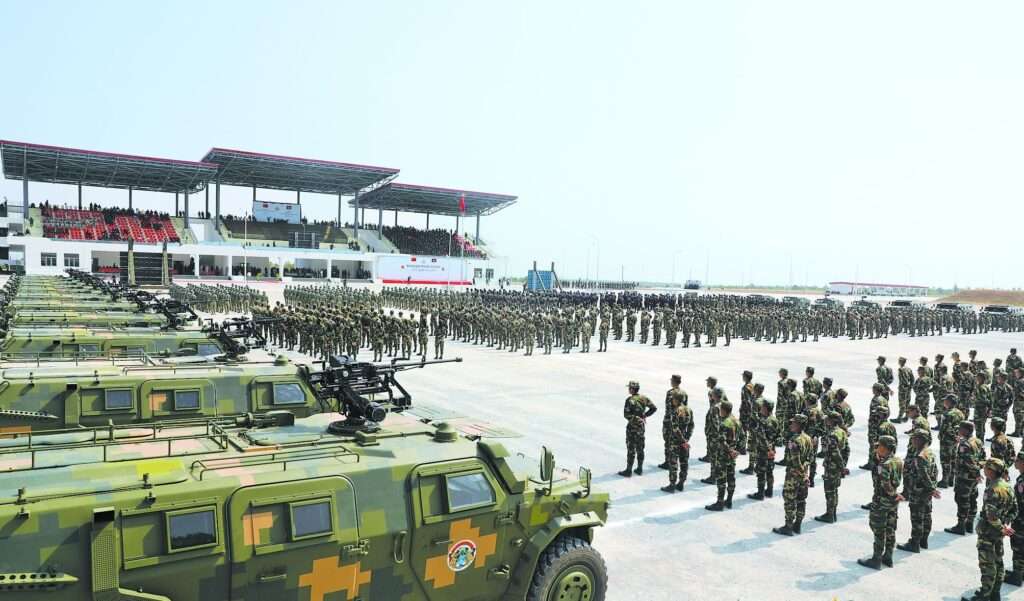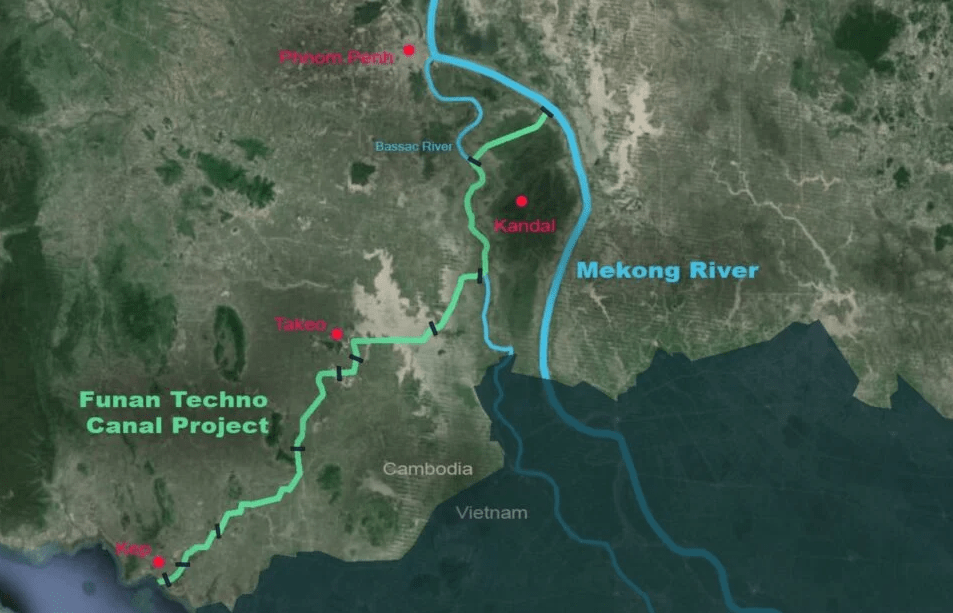Golden Dragon 2025: More Than Just an Exercise
In mid-May 2025, the coastal waters of Cambodia echoed with the roar of engines, gunfire simulations, and drone maneuvers. The Golden Dragon 2025 joint military exercise between China and Cambodia wasn’t just their largest ever, it was a signal to the region and the world that a new defence axis is consolidating in Southeast Asia.
Held across multiple Cambodian provinces, including Preah Sihanouk and Kampong Chhnang, the two-week-long drills feature over 2,000 troops, including nearly 900 from China and 1,331 from Cambodia. On display were state-of-the-art Chinese assets: Type 056A corvettes, UAVs, robotic dogs, amphibious tanks, and surgical support robots—all deployed in coordinated maritime, aerial, and ground operations.
Though officially framed as a counter-terrorism and humanitarian readiness drill, the real message lay in the symbolism: Cambodia’s unwavering strategic tilt towards China, and Beijing’s growing military footprint just south of Vietnam.
Ream Naval Base: From U.S. Ally to Chinese Outpost
At the heart of this shift lies Ream Naval Base, a once modest coastal facility on Cambodia’s southern tip that has now morphed into a strategic jewel for the Chinese military. Originally upgraded with U.S. assistance, Ream is now a showcase of China’s Belt and Road–style defence diplomacy. A 650-meter pier, capable of docking destroyers and aircraft carriers, and a joint logistics and training center was inaugurated in April 2025 is one among the latest additions.
Though Cambodian authorities maintain that Ream remains under national sovereignty and is open to international cooperation, satellite images, exclusive berthing rights for PLA vessels, and the presence of Chinese military personnel paint a different picture. The deployment of Chinese-built warships during Golden Dragon 2025 adds further weight to suspicions that the base could soon serve as a permanent Chinese outpost.
The U.S. and its allies view this transformation as a potential violation of Cambodia’s 1993 constitution, which forbids hosting foreign military forces. China and Cambodia, however, insist it’s part of a broader bilateral partnership, not a base lease.
What Cambodia Wants: Autonomy or Alignment?
For Phnom Penh, the strategic rationale is layered. Militarily, Cambodia seeks modernisation and a more credible defence posture in a region fraught with tension. Politically, the ruling elite, led by Prime Minister Hun Manet, has grown disillusioned with Western criticism and aid conditionality. Economically, the country is increasingly reliant on Chinese loans and mega-projects such as the controversial Funan Techo Canal, which aims to bypass Vietnamese-controlled segments of the Mekong River.
Cambodia is also eager to assert sovereignty in a region dominated by larger players like Vietnam and Thailand. Beijing’s support offers not just funding and hardware, but a form of geopolitical validation.
Yet this growing dependency comes at a cost. Cambodia risks alienating its ASEAN neighbours, many of whom are wary of Chinese militarisation. Moreover, efforts to hedge—such as welcoming naval visits from Japan and Vietnam seem more symbolic than strategic.
China’s Quiet Flank Strategy
For Beijing, Ream is not just about Cambodia it’s about reshaping the Indo-Pacific. China is executing a “quiet flank” strategy: securing access points across the region that bypass choke points like the Malacca Strait, while incrementally extending its naval presence westward.
By establishing quasi-permanent facilities in friendly or pliable states, China hedges against encirclement by U.S.-aligned forces and ensures logistical support for its expanding blue-water navy. Ream complements existing outposts like Djibouti in East Africa and Gwadar in Pakistan, forming a loose maritime relay stretching into the Indian Ocean.
Moreover, the Golden Dragon drills serve as more than training they are military diplomacy in action. They showcase Chinese doctrine, weaponry, and command integration. Cambodia is not just a partner; it is being woven into China’s strategic fabric.
Conclusion: A Pawn or a Player?
Cambodia’s deepening military alliance with China marks a turning point in Southeast Asia’s strategic balance. The scale of Golden Dragon 2025 and the transformation of Ream Naval Base reveal ambitions that go beyond bilateral cooperation—they signal China’s intent to normalise its military presence in new territories under the guise of partnership.
Whether Cambodia is a willing architect of its own strategic rise or simply a pawn in Beijing’s larger game remains to be seen. What’s clear is that the South China Sea is no longer the only maritime hotspot in the region. The Gulf of Thailand is quickly joining it and the world is beginning to pay attention.


